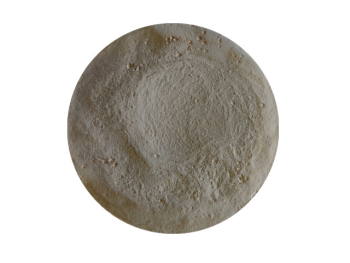Feed Grade Glucose Oxidase Enzyme For Animal Additive
Introduction
This product is produced by submerged fermentation of Penicillium notatum followed by purification and formulation. Based on its unique properties, the enzyme is used as a feed additive to improve intestinal microflora, upgrade the biological value of feed, and prevent diseases by the removal of oxygen, generating hydrogen peroxide and gluconic acid.
Mechanism
Glucose Oxidase can specifically catalyze the transformation of β-D-glucose to gluconic acid producing hydrogen peroxide at the cost of oxygen. The oxygen removal creates an aerobic environment in the intestine, and oxidative H2O2 is able to damage toxins in feed, while gluconic acid modifies intestinal pH to favor the growth of beneficial microorganisms.
A: C6H12O6 + O2 + H2O → C6H12O7 + H2O2 B: C6H12O6 + 1/2 O2 → C6H12O7

Specifications
| Condition | Range |
| Activity Temperature | 25℃-60℃ |
| Optimum Temperature | 30℃-40℃ |
| Activity pH | 3.0-7.0 |
| Optimum pH | 5.5-6.3 |
Product Standard
The product complies with NY/T 722-2003 and ENZYMES.BIO’s internal standard Q/CSS 02-2019.
Product Specification
Different products for different applications are available, and some are water-soluble, while the others are not. Color may vary from batch to batch. Color intensity is not an indication of enzyme activity.
Dosage
| Used For Complete Feed | Dosage: (g/MT of complete feed) |
| ≥200 u/g | 200~300 |
| ≥1100 u/g | 50 |
| ≥2800 u/g | 30 |
| ≥10000 u/g | 5-8 |
Functions & Benefits
- Maintain gastrointestinal functions and check the growth of harmful microorganisms.
- Lower intestinal pH to benefit the digestion and absorption of nutrients.
- Damage aflatoxin by oxidation and promote animal health.
Package
- Package: 1 kg / bag.
- Storage: Keep sealed in a dry and cool place and avoid direct sunlight. Slight sedimentation is acceptable since it will not impact the performance of the product.
Shelf Life
12 months in a dry and cool place.
Safety
Enzyme preparations are proteins that may induce sensitization and cause allergic types of symptoms in susceptible individuals. Prolonged contact may cause minor irritation for skin, eyes, or nasal mucosa. Any direct contact with the human body should be avoided. If irritation or an allergic response for skin or eyes develops, please consult a doctor.




